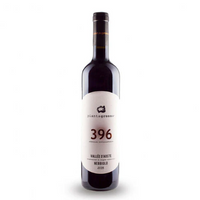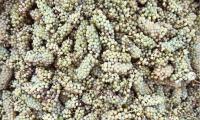What Henry's Drinking: Pianta Grossa Picotendro

First off, Picotendro is the name of the local Nebbiolo clone in the Italian alpine regione Val D'aosta.
Its name literally means "small and tender," which actually shows fidelity to its aspect and bearing: Nebbiolo is Italy's greatest grape, mostly grown in neighboring Piemonte with a sliver in, also neighboring, Lombardia.
While its most famous examples still come from the Langhe of Piemonte - specifically Barolo - times (and climatic conditions, hence the wines) are a' changin. The higher altitude areas of the alps are in a logical position to inherit the quality mantle as the climate warms and wines from these cooler elevations are already showing more dimension and completeness of flavor with none of the unripe astringency of the past.
While these qualitative changes are more apparent in the Piemontese alpine foothills, due to much larger growing zones, the Val D'aosta is a sort of sleeper hit. Here you are not in the foothills of the Alps but IN the Alps. The difference in conditions from where Nebbiolo still mostly comes from is stark. The plots are small, mostly cobbled together from available hillsides that are very difficult, but still possible, to work. Production in this region seems like a labor of love. Much like in life, that concept is hard to define, but you know when it's there. Vineyard work isn't easy anywhere but in Val D'aosta it's particularly treacherous. Terraces were carved out of mountainsides to create workable surfaces and provide vineyard area for vines. These are supported by stone walls, hand-made of course, that need to be maintained and periodically rebuilt. The walls protect the vines from landslides and provide assistance in ripening their grapes. Their stones absorb heat during the day and release it at night, mitigating the extreme diurnal shift at these altitudes. There's a documentary on Amazon about grape growers in the neighboring zone of Carema (across the border in Piemonte but close enough to spit into) that has similar mountainous terrain. While I was excited at first thinking I came upon a geeky gem, I quickly realized the film showed nothing but workers struggling to rebuild their stone held terraces and pergola poles to keep the vines upright. Hardly any words were uttered. Funny now, but you could skip it. Mountain vine growing is not for the meek. While there's obviously no mechanization here, there is a monorail and unlike the one in the famous Simpsons episode, this one has a purpose. It helps transport grapes down the slopes.
The Pianta Grossa 396 Nebbiolo (Picotendro) is a supreme representation of grape and place. Soft, light, elegant and pretty with wild flowers, crushed herbs and wild red berries all lifted and vibrant with velvety textured tannins and a persistence owing to its acid freshness. I keep coming back to the word pretty with this wine. More than any flavor descriptors, the general character of a wine is the truest expression of its availability to our senses. This is one of the very last family owned estates in the zone where growers mainly sell grapes to the local co-op. This makes their wines more personal. I descriptor, perhaps, even more relevant than pretty.

